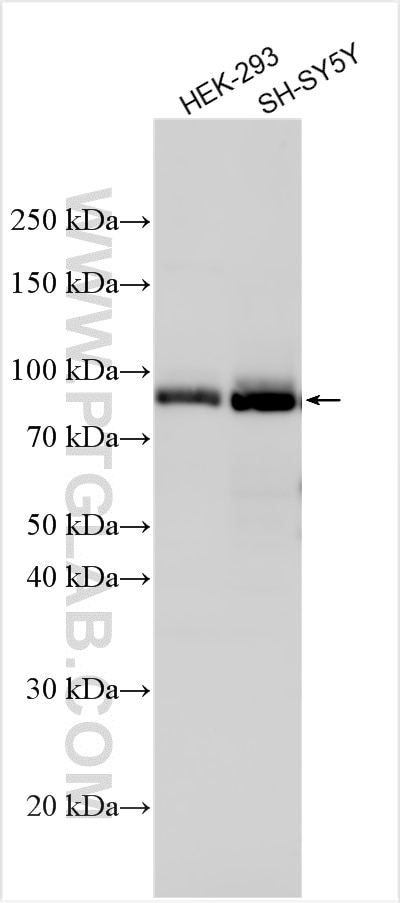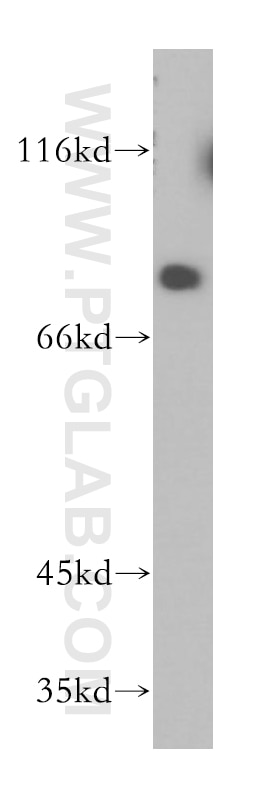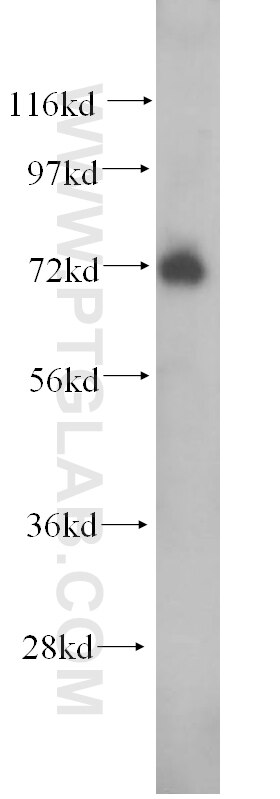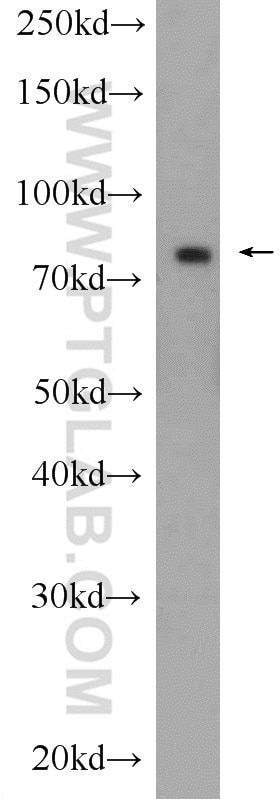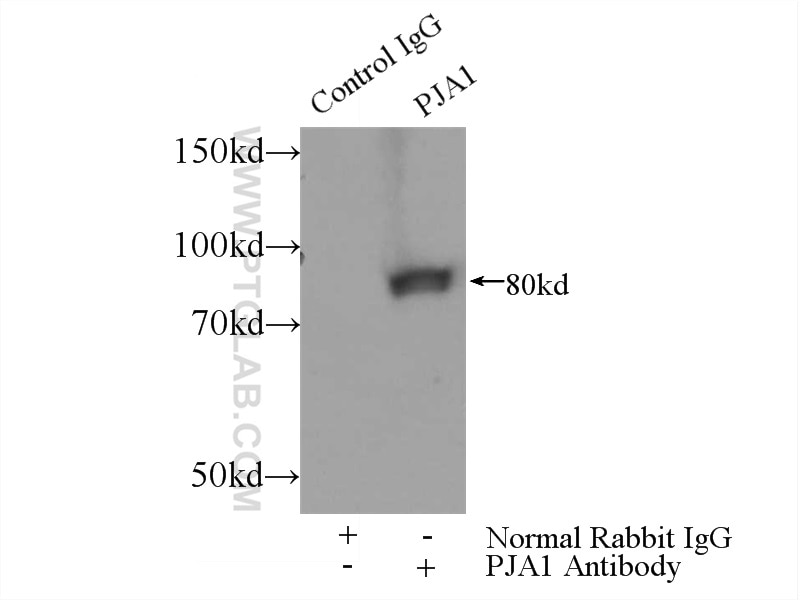- Phare
- Validé par KD/KO
Anticorps Polyclonal de lapin anti-PJA1
PJA1 Polyclonal Antibody for WB, IP, ELISA
Hôte / Isotype
Lapin / IgG
Réactivité testée
Humain, rat, souris
Applications
WB, IF, IP, CoIP, ELISA
Conjugaison
Non conjugué
N° de cat : 17687-1-AP
Synonymes
Galerie de données de validation
Applications testées
| Résultats positifs en WB | cellules HEK-293, cellules SH-SY5Y, tissu cérébral de rat, tissu cérébral de souris |
| Résultats positifs en IP | tissu cérébral de souris |
Dilution recommandée
| Application | Dilution |
|---|---|
| Western Blot (WB) | WB : 1:2000-1:12000 |
| Immunoprécipitation (IP) | IP : 0.5-4.0 ug for 1.0-3.0 mg of total protein lysate |
| It is recommended that this reagent should be titrated in each testing system to obtain optimal results. | |
| Sample-dependent, check data in validation data gallery | |
Applications publiées
| KD/KO | See 3 publications below |
| WB | See 7 publications below |
| IF | See 2 publications below |
| CoIP | See 1 publications below |
Informations sur le produit
17687-1-AP cible PJA1 dans les applications de WB, IF, IP, CoIP, ELISA et montre une réactivité avec des échantillons Humain, rat, souris
| Réactivité | Humain, rat, souris |
| Réactivité citée | rat, Humain, souris |
| Hôte / Isotype | Lapin / IgG |
| Clonalité | Polyclonal |
| Type | Anticorps |
| Immunogène | PJA1 Protéine recombinante Ag11820 |
| Nom complet | praja ring finger 1 |
| Masse moléculaire calculée | 643 aa, 71 kDa |
| Poids moléculaire observé | 71-80 kDa |
| Numéro d’acquisition GenBank | BC075803 |
| Symbole du gène | PJA1 |
| Identification du gène (NCBI) | 64219 |
| Conjugaison | Non conjugué |
| Forme | Liquide |
| Méthode de purification | Purification par affinité contre l'antigène |
| Tampon de stockage | PBS with 0.02% sodium azide and 50% glycerol |
| Conditions de stockage | Stocker à -20°C. Stable pendant un an après l'expédition. L'aliquotage n'est pas nécessaire pour le stockage à -20oC Les 20ul contiennent 0,1% de BSA. |
Informations générales
PJA1(E3 ubiquitin-protein ligase Praja-1), also named as RNF70, regulates the level of PRC2 (polycomb repressive complex 2) by targeting its free subunits for Ub-mediated proteasomal degradation and it can be involved in protein ubiquitination in the brain and is a suitable candidate gene for MRX(PMID:12036302). The Praja1 protein is unlikely to be a membrane receptor, since it lacks a hydrophobic transmembrane domain(PMID:9393880). It has 3 isoforms produced by alternative splicing with the molecular weight of 71 kDa, 50 kDa and 65 kDa.
Protocole
| Product Specific Protocols | |
|---|---|
| WB protocol for PJA1 antibody 17687-1-AP | Download protocol |
| IP protocol for PJA1 antibody 17687-1-AP | Download protocol |
| Standard Protocols | |
|---|---|
| Click here to view our Standard Protocols |
Publications
| Species | Application | Title |
|---|---|---|
Nat Commun Praja1 E3 ubiquitin ligase promotes skeletal myogenesis through degradation of EZH2 upon p38α activation.
| ||
Ann Clin Transl Neurol A recurrent PJA1 variant in trigonocephaly and neurodevelopmental disorders. | ||
Biochim Biophys Acta Mol Cell Biol Lipids Diacylglycerol kinase δ destabilizes serotonin transporter protein through the ubiquitin-proteasome system. | ||
J Virol PJA1 Coordinates with the SMC5/6 Complex to Restrict DNA Viruses and Episomal Genes through Interferon-independent Manner. | ||
Neuropathology Praja1 RING-finger E3 ubiquitin ligase suppresses neuronal cytoplasmic TDP-43 aggregate formation. | ||
Neuropathology Praja1 RING-finger E3 ubiquitin ligase is a common suppressor of neurodegenerative disease-associated protein aggregation. |
